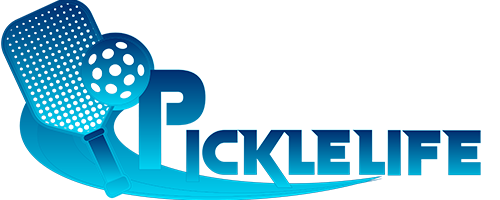Mastering The Pickleball Forehand: Unleash Your Inner Pro
The game of pickleball has taken the sporting world by storm, often described as a perfect blend of tennis, badminton, and ping-pong. For beginners eager to grasp the fundamentals, mastering the pickleball forehand is crucial. This stroke is not merely a technical skill; it serves as a powerful weapon, allowing players to take control of the game, drive opponents off balance, and score points with finesse. Understanding the essential techniques, grip choices, and body mechanics behind the forehand will set you on a path to pickleball excellence.
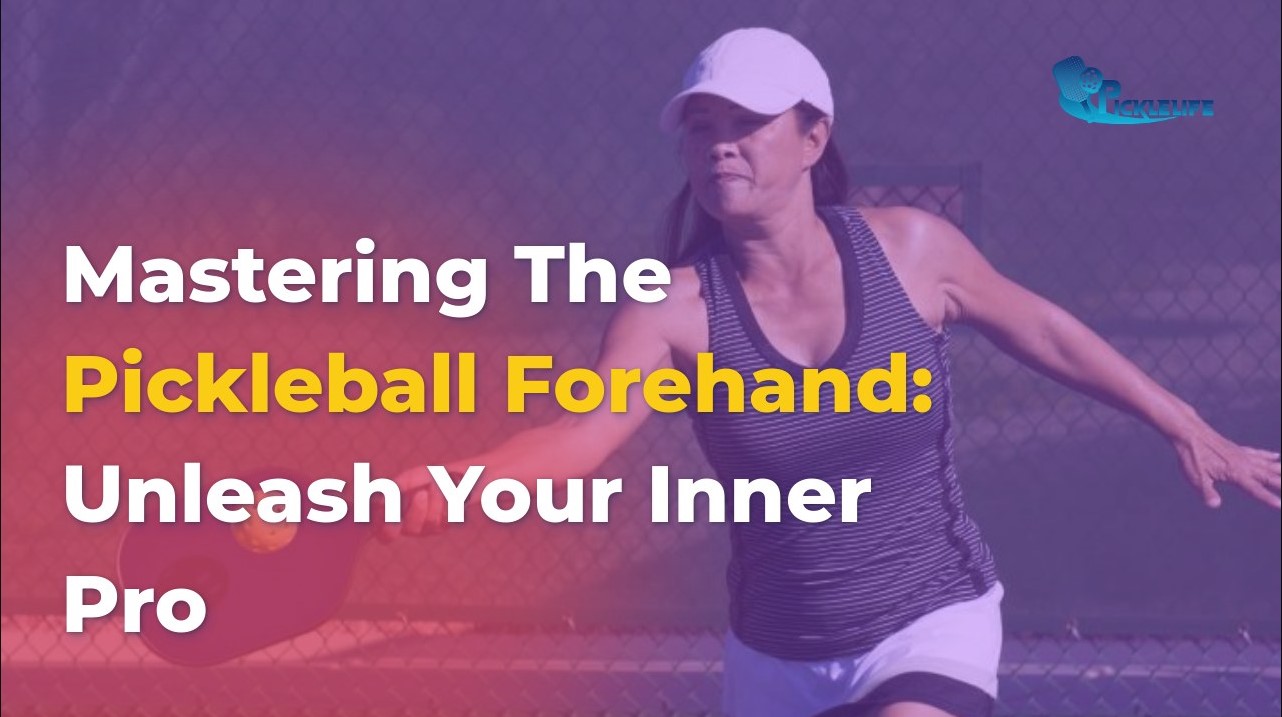
Understanding the Pickleball Forehand – Your Weapon of Choice
The forehand stroke is the cornerstone of many competitive pickleball strategies. This shot is characterized by the dominant hand leading the paddle forward, allowing players to harness their body’s strength and leverage to produce a powerful, accurate hit. Unlike the backhand, which requires players to rotate their bodies in a less natural motion, the forehand is a more comfortable and intuitive stroke for most people. Furthermore, it can be executed in various ways power shots, topspin hits, or slices giving players the versatility to adapt their gameplay.
Understanding the significance of your forehand can greatly enhance your overall performance. Not only is it useful for offensive drives aimed at scoring points, but it also plays a critical role in defensive scenarios. By orchestrating a well-placed forehand, players can set up subsequent shots strategically, put pressure on their opponent, and induce mistakes. Each time you step onto the court, the forehand offers a challenging yet satisfying skill to master.
The excitement of landing a perfect forehand shot is a feeling like no other. It creates a sense of accomplishment and boosts confidence, providing players with opportunities for both personal growth and competitive success.

Choosing Your Grip – The Foundation of a Great Forehand
The grip you choose to use for your forehand is not just a matter of personal comfort; it fundamentally alters how you interact with the paddle and the ball. Two primary grip styles dominate the pickleball landscape the continental grip and the eastern grip. Each has unique benefits and drawbacks that can significantly impact your game.
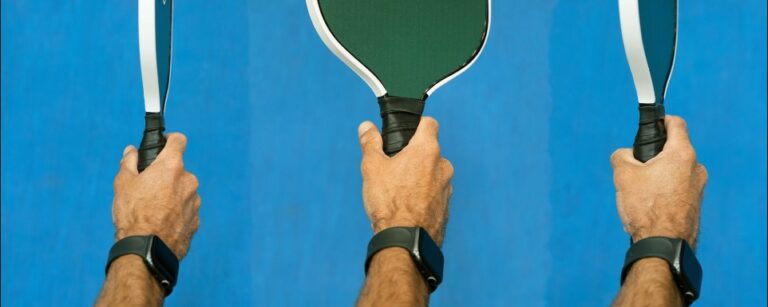
The Continental Grip
To grasp the continental grip, imagine placing your paddle like you would when shaking hands. Your base knuckle sits on bevel 2 of the paddle, providing a versatile and comfortable grip. This position allows for seamless transitions between different shots, making it ideal for beginners. However, while it is excellent for overall gameplay, you might find that it offers less power for forehand shots compared to other grips.
The Eastern Grip
On the other hand, the eastern grip requires placing your base knuckle on bevel 3. This grip feels more natural for generating topspin and powerful shots, giving players increased control over their forehand. Think of this as giving your paddle a firm handshake this maneuver can amplify the energy transferred to the ball during delivery.
Grip Essentials – Don’t Forget!
Regardless of which grip you choose, there are a few essential practices to keep in mind. Spread your fingers slightly for enhanced control; avoid a bunched hand that can restrict movement. This correct positioning provides better paddle head support and helps achieve that all-important “trigger finger” for spin.
Finding Your Ready Position – Poised for Action
In the realm of pickleball, maintaining an athletic stance is essential for ensuring that you are prepared to respond to any incoming ball. Your readiness will dictate how quickly you can move and respond, influencing your ability to execute a successful forehand.
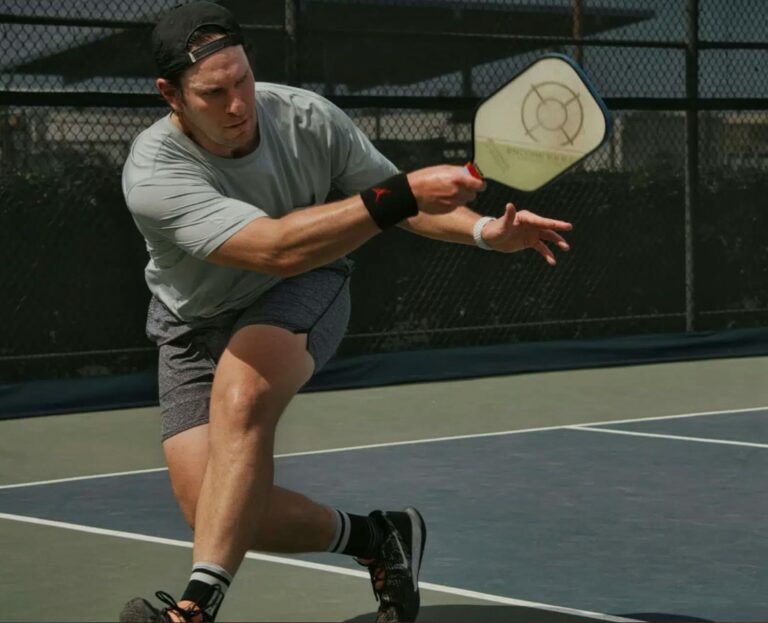
The Athletic Stance – Your Foundation
For an effective ready position, start with your feet shoulder-width apart and a slight bend in your knees. Balance is critical; position your weight on the balls of your feet, enabling swift movements in any direction. This stance aligns well with the “split step” technique familiar to those inclined toward tennis or other racquet sports, allowing for a quick reaction time while also powering your shots.
Mental Readiness – Be Alert, Not Asleep!
However, being ready doesn’t stop at physical positioning. It’s equally vital to stay mentally engaged. Keep your eyes focused on the ball, maintaining a sense of anticipation for its trajectory. Small, constant movements while waiting for the ball can also enhance your readiness, ensuring you’re light on your feet for rapid direction changes.
This combination of physical and mental readiness will ensure you are poised for action at all times. The athletic stance isn’t merely a starting point; it contributes to the overall dynamics of how you approach your strokes, your connection to the gameplay, and how you adjust to the unpredictable nature of your opponent’s shots.
Mastering the Swing – 3 Simple Steps to Success
Once you have your grip and ready position down, it’s time to break down the mechanics of your forehand swing. Mastering these critical components can profoundly improve your technique, leading to a more effective and consistent stroke.
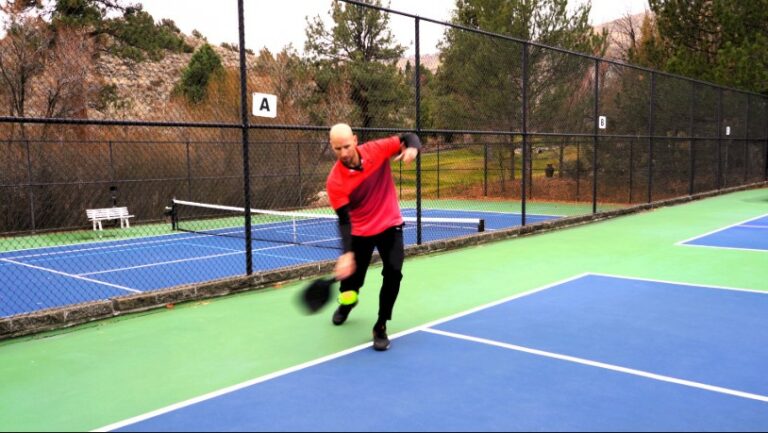
Breaking Down the Swing
The forehand swing is essentially a combination of three core movements:
- Elbow Slide: Bring your elbow in front of your body, guiding the paddle into position.
- Wrist Roll: Allow the paddle to pass from a lower position to one above your hand, enabling a fluid upward movement.
- Elbow Bend and Reach: Extend the paddle across your shoulder, preparing to connect with the ball.
Visual aids such as arrows or stick figures can be advantageous here. Having a slow-motion video demonstrating the three steps will allow beginners to visualize their swing effectively.
Combining the Movements – Smooth and Controlled
Transitioning from these individual mechanics into one fluid motion is where practice plays a vital role. The integration of the movements can take time, so patience is essential. Using a mirror or recording your practice sessions can offer visual feedback to assess the smoothness of your execution.
A well-executed forehand swing is the product of careful attention to these key movements. Practicing them can bring you closer to reaching your full potential, ensuring that each game elevates your skills while keeping the experience enjoyable and engaging.
Adding the Ball – From Air Swings to Real Hits
Now that you’ve practiced your swing, it’s time to introduce the ball into your forehand training routine. This stage shifts the focus from theoretical understanding to practical application, making your sessions dynamic and game-like.
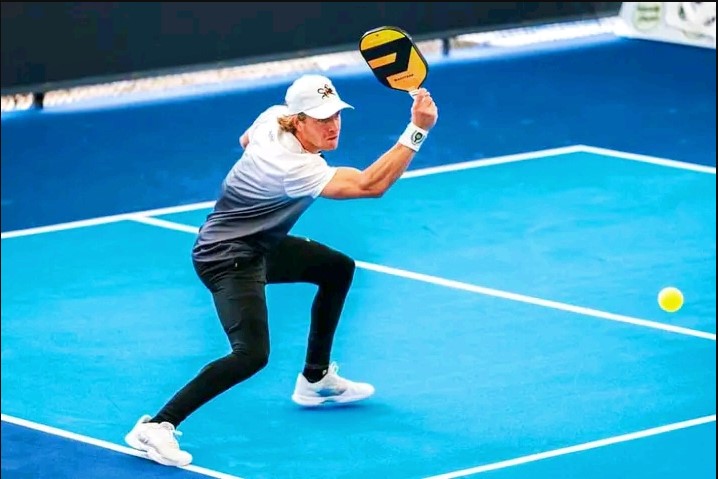
Drop Feeds – Your First Forehand Contact
The drop feed technique involves a partner or coach gently tossing the ball for you to practice hitting with your forehand. This simple method allows for enough time to execute your mechanics and develop timing while building confidence in your strokes.
Introducing the Unit Turn – Power Up!
Furthermore, incorporating the unit turn a simultaneous rotation of your hips and shoulders as you prepare to swing can give your shots added power and efficiency. This concept involves pivoting on your back foot while transitioning your weight forward. This technique not only enhances control but also fosters a significant increase in shot force.
Footwork for the Forehand – Get to the Ball!
As the adage goes, “Footwork is the foundation of every great shot.” In pickleball, mastering your placement and movement creates opportunities for effective shot execution, especially when tapping into your forehand strengths.
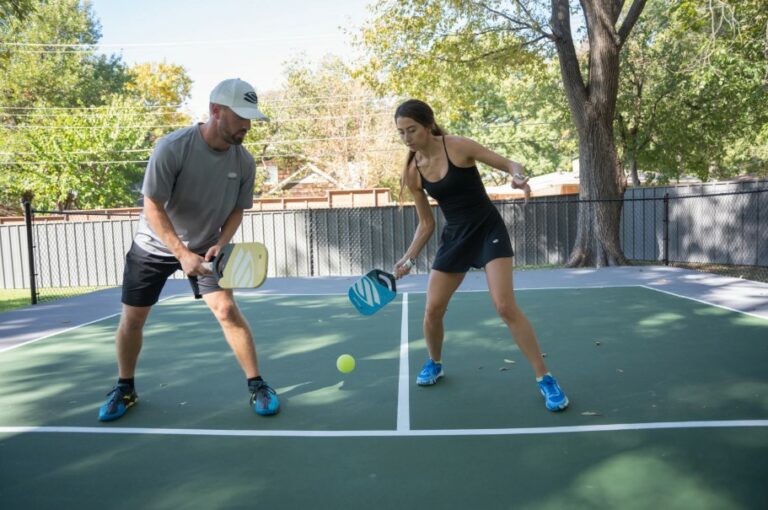
Why Footwork Matters
Your positioning controls your balance and timing, ultimately dictating whether you can strike the ball accurately. Good footwork allows you to approach the ball with confidence, ensuring you’re in the optimal position to deliver powerful and controlled shots.
Forehand Footwork Drills
Regularly practicing movement drills will build muscle memory, enhancing your overall gameplay:
- Shadow Swings: Practice swings without the ball to refine your motion.
- Cone Drills: Set up cones to practice directional movements and foot placement.
- X Drill: Focusing on moving forward and backward to develop quick response times.
Understanding your footwork enhances your forehand execution, effectively rounding out your skill set as a pickleball player.
Putting It All Together – Live Ball Practice
With your grip, feet, swing, and instincts trained, you’re ready to engage in live ball practice. This type of session simulates actual play, allowing you to refine your skills under more pressure and unpredictability.
Live Feeds – The Real Deal
Engaging in live ball scenarios with a partner helps cultivate your awareness and timing while also challenging you to apply what you’ve trained thus far.
Skinny Singles – Taking It to the Court
Alternatively, playing “skinny singles” a variant of pickleball where players only utilize the center of the court hones your shot accuracy and placement without overwhelming each player with vast court responsibilities.
Power Up! – Adding More ‘Oomph’ to Your Forehand
Your forehand should not just be consistent; it should also carry enough power to put pressure on your opponent. Exploring techniques to add that extra “oomph” will elevate your overall effectiveness on the court.
Engaging Your Core – The Power Source
The key to translating strength into your forehand lies in harnessing your legs and core, not relying solely on your arm strength. Visualizing this as transferring energy from your feet, through your core, and into your paddling arm can create a more impactful stroke.
Advanced Drill: Kneeling on Towel
An advanced drill includes kneeling on a towel during practice to emphasize hip rotation and weight transfer. Taking this approach can forge the habit of full body engagement during your shots.
Common Forehand Mistakes – Don’t Let These Trip You Up!
Even seasoned players experience slips when it comes to technique. Identifying common mistakes can help ensure your learning curve remains steady.
- Over-Swinging – Less is More: Resisting the temptation to over-swing is critical. Sometimes, power lies in consistency rather than aggression.
- Poor Ball Contact – Hitting the Sweet Spot: Focus on making contact with the ball at its ideal height approximately waist level. This affects both control and the overall quality of your shot.
- Stopping Swing Short – Follow Through!: Following through fully after contact is essential for maintaining shot direction and power. Don’t allow your momentum to falter after making contact.
- Rushing the Shot – Slow Down to Speed Up: Allow yourself the necessary time for a successful stroke; rushing can lead to a loss of accuracy.
- Inconsistent Stance – Find Your Base: Ensure that every time you prepare for a shot, your feet are set properly. A consistent stance is foundational to successful execution.
- Remember: Mistakes are Part of the Process!: Each error is an opportunity to learn embracing this mindset will help alleviate some pressure and enhance your enjoyment of the game.
Building Confidence – Your Mental Game Matters
The mental component of pickleball can often be overlooked, yet it plays a foundational role in performance and consistency. Building your self-belief and managing nerves can help establish a robust mental game.
Believe in Yourself – You Can Do This!
Fostering a positive mindset about your capabilities can create a profound influence on your gameplay. Remind yourself of your progress regularly, and celebrate your achievements, no matter how small.
Manage Nerves – Stay Calm Under Pressure
Techniques such as deep breathing or visualization ahead of matches can reduce anxiety and enhance overall focus during gameplay.
Practice, Practice, Practice! – The Key to Improvement
As with any skill, intensive practice sharpens your technique. Fostering a structured, enjoyable training routine will yield the desired results over time.
Making Practice Fun and Effective
Consider varying your practice routine with solo drills, partner exercises, and competitive games. Keeping things fresh contributes to sustained motivation and improvement.
Drill Ideas for Every Level
- Shadow Swings: For warming up and perfecting technique.
- Wall Drills: Practice consistency with different spins and control.
- Target Drills: Hitting specific areas, such as cones, aids with accuracy.
It’s a Journey, Not a Sprint
Understanding that perfection will not happen overnight is vital. The journey of mastering your forehand encapsulates challenges and victories, all contributing to personal growth as a player.
Choosing the Right Paddle – A Tool for Your Success
Selecting the right equipment can significantly influence your training and performance. Understanding the key features of paddles can guide your decisions.
Paddle Weight – Finding the Right Balance
Lighter paddles allow for rapid swing speeds, enhancing agility. Conversely, heavier paddles often produce more power, ideal for players focusing on strong shots.
Paddle Shape – Wide or Elongated?
Wide paddles provide larger sweet spots, making them forgiving of off-center hits. Elongated paddles, on the other hand, offer more reach and can favor advanced players looking for additional control.
Paddle Material – Feel the Difference
The choice of material also affects playability:
- Wood: Classic feel, excellent for control but often less power.
- Composite: Blends power, control, and durability, favored by competitive players.
Get Expert Advice – Don’t Be Afraid to Ask!
Don’t hesitate to consult experienced players or visit a specialized pickleball shop for tailored advice on choosing the right paddle for your playing style and needs.
Conclusion: From Beginner to Forehand Master – You’ve Got This!
Mastering the pickleball forehand is a multi-faceted journey that encompasses learning the appropriate grips, stances, body mechanics, and mental preparation. Keeping in mind the key takeaways practicing regularly, ensuring consistent technique, and addressing common pitfalls will lead you towards improvement and greater enjoyment in the game. The excitement of refining your skills and expressing yourself through gameplay is ultimately where the magic of pickleball lies. Remember to keep the process light-hearted and enjoyable, as the ultimate goal is to have fun while achieving mastery. Embrace your journey, and who knows? You may find yourself becoming the player you’ve always aspired to be.
